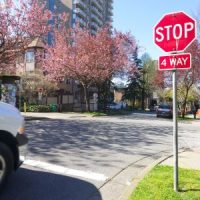Liability for Accidents at Four-Way Stops

Car accidents can and do happen just about anywhere on Georgia roads. There are, however, certain areas, like intersections, where crashes are more likely to occur. Intersections are high-risk places for collisions, typically because of driver negligence. This is especially true in intersections with four-way stop signs, as drivers are often unsure of who has the right-of-way. Unfortunately, this can also make it more complicated to determine who was responsible for such a crash.
What are Four-Way Stops?
Four-way stops are a type of intersection, the main purpose of which is to manage traffic flow and enhance safety when there are no traffic lights. The primary goal of four-way stops is to:
- Minimize the risk of collisions, especially t-bone crashes;
- Improve traffic flow by reducing wait time;
- Enhance pedestrian safety by slowing vehicles and creating a more controlled environment;
- Improve cost-effectiveness, as signs are cheaper to install and maintain than traffic signals; and
- Manage congestion in areas with lower traffic volumes.
At these intersections, drivers coming from all four directions are required to:
- Stop at the white line;
- Wait until they have the right-of-way before proceeding;
- Checking for other vehicles, cyclists, and pedestrians before moving forward or turning; and
- Only proceeding through the intersection when doing so is safe.
Unfortunately, not all drivers obey these rules, which can leave other road users at risk of injury in the event of a collision.
Right-of-Way Rules
Four-way intersections also dictate movement from every direction according to right-of-way rules. Under these laws, the first car to arrive and stop at the intersection has the right to proceed through the intention first. This is why it’s so important for drivers to pay attention to the order of arrival when they come to a four-way stop. If two vehicles arrive at the intersection at the same time, then it is the driver on the right who gets to move forward first. If, however, one of the drivers isn’t turning but is proceeding forward, while the other driver is turning left, then the driver who is going straight has the right-of-way. When two drivers arrive at the intersection and one is turning right, then he or she has the right-of-way and can proceed through the intersection first. Liability for a crash that occurs at a four-way stop will depend on who had the right-of-way at the time of the accident, so investigators will need to carefully assess the order in which the drivers arrived, their intended directions, and whether any of the drivers committed a traffic infraction, like failing to stop, speeding, or failing to yield the right-of-way.
Schedule a Free Consultation Today
If you were involved in an accident at a four-way stop, please call the dedicated Atlanta car accident lawyers at Shiver Hamilton Campbell to learn more about Georgia’s right-of-way laws and how they could affect your claim. You can set up a free case review today by calling 404-593-0020.
Sources:
law.justia.com/codes/georgia/2022/title-40/chapter-6/article-4/section-40-6-70/
macon.com/news/state/georgia/article284921422.html


